

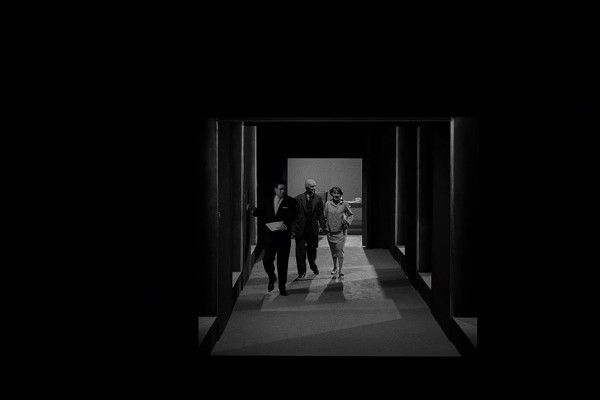
Rod Serling had cited "extreme fatigue" after season three, by which point he was 37 years old, and had written 69 episodes. Serling was concerned about the quality of his scripts, and it is notable that they were suffering. Although his "comedy" scripts were nearly always lousy, for season three many of his straight drama scripts suffered, too, with at least three or four that were beneath his usual standard.
The Trade-Ins (and, indeed, seven of the top ten episodes) is proof that when Rod was "on", he was still very much on. A terrific and touching script about an old couple who save up for replacement bodies, only to find that they can afford just one... to say more would be to spoil the various exciting and heartbreaking/heartwarming twists and turns the plot takes on it way. Though huge credit must go to Joseph Schildkraut, whose wife died during production, but insisted on continuing with the filming.
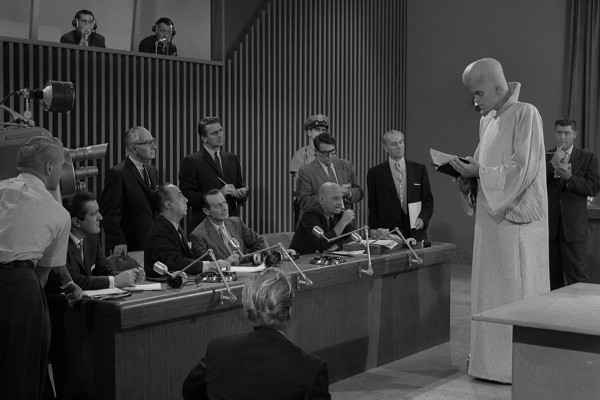
To Serve Man is, along with It's A Good Life, one of two season three episodes that extended beyond the series itself and into a cultural cache with the general public. Even many who haven't seen it will be aware of its killer twist via osmosis, and the story has been much parodied in pop culture. Serling's growing fatigue with writing so many scripts is clear when taking into account how many of his season three episodes were based on existing stories by other writers: To Serve Man was a 1950 short story by Damon Knight. However, regardless of its second-hand origins, it still emerges as a classic.
The boarding area of the UFO (last seen in The Monsters Are Due On Maple Street) is taken from Forbidden Planet, and shots of UFOs flying are cribbed from two 1950s sci-fi movies, adding to the "retro" feel. However, the rest of the production rises above such budgetary limitations, with a flashback sequence, a character narration and even a break of the fourth wall.
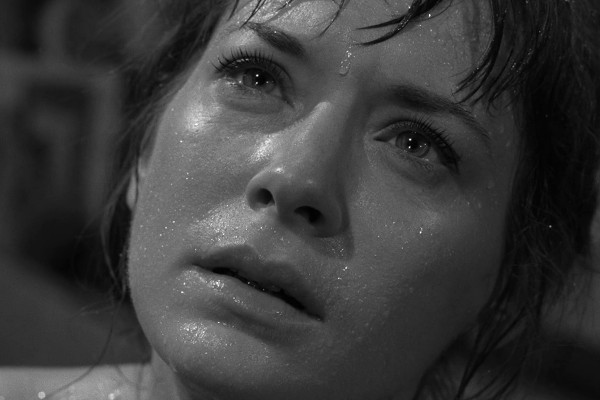
A classic episode with a great twist and a compelling central performance by Lois Nettleton. Featuring the scientifically shaky but narratively enticing conceit that the Earth is heading towards the sun, it's a real standout. Sadly, however, Nettleton is alone in the acting stakes, with all around her (particularly her friend and the radio DJ) flat and unconvincing. It is, however, a distraction that's easy to look past, if you're prepared to make the effort, much in the same way the windows have undrawn curtains to increase the tension, in defiance of all logic. Coincidentally, a movie with a very similar theme was released into cinema just six days later: the classic British film The Day the Earth Caught Fire.
The age of censorship seemed to have relaxed during the third season. As discussed with season two, some episodes featured married couples in separate beds... in season three two episodes (Little Girl Lost and Person or Persons Unknown) featured doubles. This is taken to new extremes here, where Nettleton in a nightdress, covered in sweat, is contrasted with an intruder into the apartment block, who we're clearly meant to think is a potential rapist.
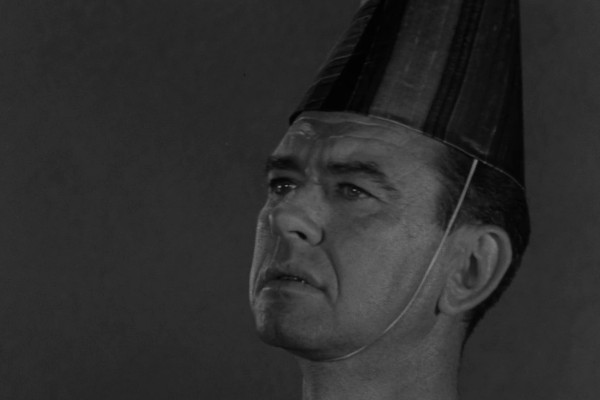
Rod Serling wrote fewer episodes during season three (a still-mammoth 21), and more of them were inspired by other writers, with nine of them based on ideas or stories elsewhere. This particular Serling script was based on a short story by Jerome Bixby. An episode starring Billy Mumy as Anthony, a boy who can control the world with his mind, it's one of the most famous and popular episodes out of the entire series, with history's most intense after-dinner party. The major plot hole is that the terrified residents debate over trying to kill Anthony while he's distracted, whereas killing him as he slept would be far less risky... though perhaps not ideal subject matter for a family show.
The serial was so well-regarded it was remade as part of the average Twilight Zone movie in 1983. While Jeremy Licht contained none of the "otherworldliness" that Billy Mumy did, there is a bonus where Mumy himself appears as a diner in a café complaining about Anthony's behaviour. When his friend pushes Anthony to the floor, Mumy's character scornfully tells him "that was real good!" as an in-joke bonus. Such in-jokes add to the piece, with a schoolteacher who befriends Anthony having the same name as the teacher in Nightmare As A Child. Unfortunately Joe Dante's kooky, cartoon direction tends to overshadow the story, and his contribution to the series would best be served with the minor classic The Shadow Man in the 1980s revival series.
A real update on the story occurred forty years later, with one of the better episodes of the 2002 series. Here Mumy reprised the role, and his real-life daughter played Anthony's daughter with the same powers. Anthony had gone from a spoilt child who didn't know any better and into a truly vindictive man, but his daughter provided the happy ending that the film also added, by bringing everything back from the cornfield. However, his daughter contained the same desire for vengeance, so the story was left with a dark undercurrent to its "fix everything" ending.
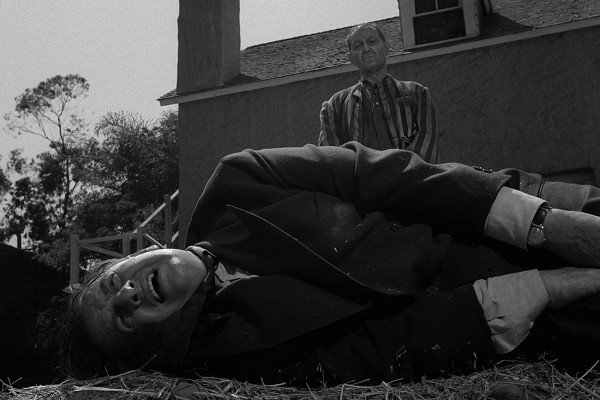
While the Twilight Zone's quality control may lessen as the series goes on (the final two seasons can be very "hit and miss"), one thing that increases is the darkness of tone. Season One had some very strong, even classic, episodes, but it's doubtful it would have gone as far as Deaths-Head Revisited.
Oscar Beregi, Jr. plays a former SS Officer who gets to experience the ghosts of a concentration camp... it's an episode that pulls no punches. Serling's scripts are very variable in season three, but here the Jewish writer gives us full, unrestrained emotion. Beregi Jr, as with The Rip Van Winkle Caper, skirts close to outright hamminess (particularly in flashbacks), and the incidental music can be repetitive, but there's a raw honesty at work here. This is Rod with something to say once more, and while the programme indulges in preachiness, it's a nakedly honest preaching. Assessing such an episode is difficult, as it's far less fantastical than the other episodes that make up this top five, and, at the same time, far more vital.
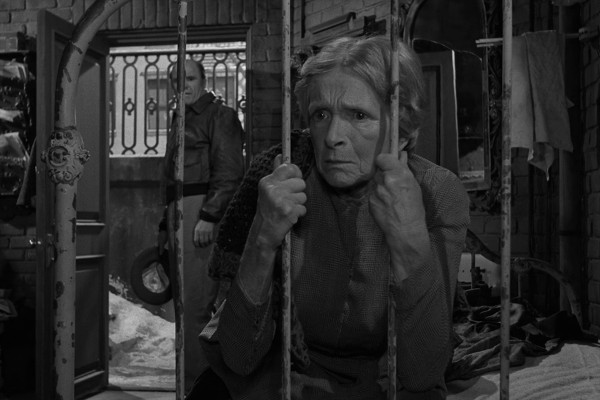
A beautiful and lyrical tale by George Clayton Johnson about an elderly lady fearing the touch of death. Lamont Johnson does a wonderful job of direction, with some nice touches, such as the lady's bedrails becoming almost prison bars, as pictured.
There's a touching, sweet conclusion as she walks arm-in-arm with Death, a classic two-hander play full of the delightful, stage-like dialogue the series excels in. Robert Redford is arguably the most famous guest star the series ever had, though was just in his third year of screen acting at this stage.
Meanwhile, one element of the series that is fairly unusual today is just how many English actors appear in the programme using their real accents without it being commented on. Gladys Cooper acts up a storm as the central character, and would make return appearances in the programme's final two seasons, all without anyone questioning how someone living in America could speak without an American accent. This is far from unique to the series, and, while Lancashire-born J. Pat O'Malley puts on a US accent in The Fugitive, this season alone sees Donald Pleasence and Barry Morse take central roles, to say nothing of an effete English hobo in Dead Man's Shoes.
Ironically enough, then as the peak of season three, it was actually produced - along with The Grave - during season two, and held back for broadcast.